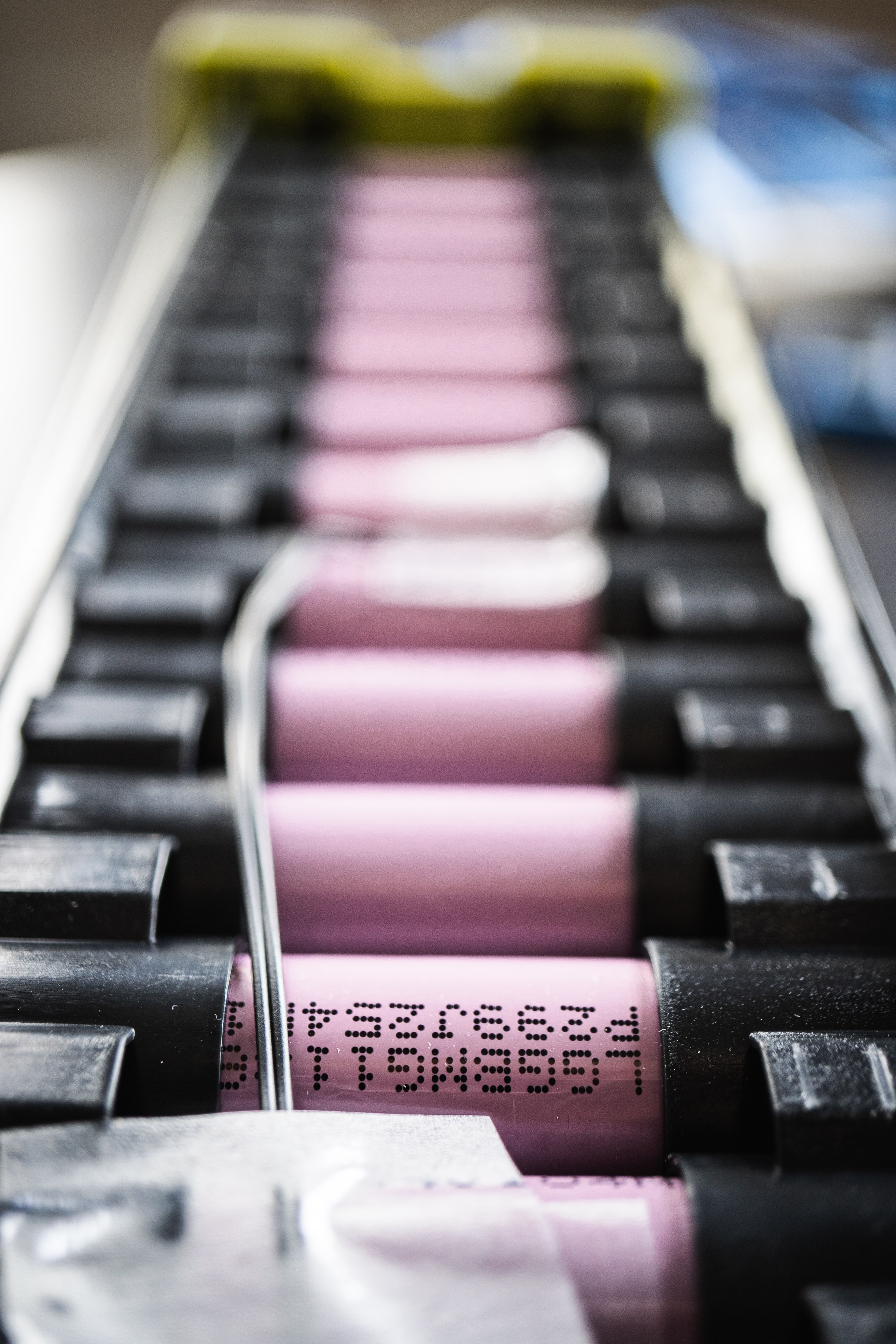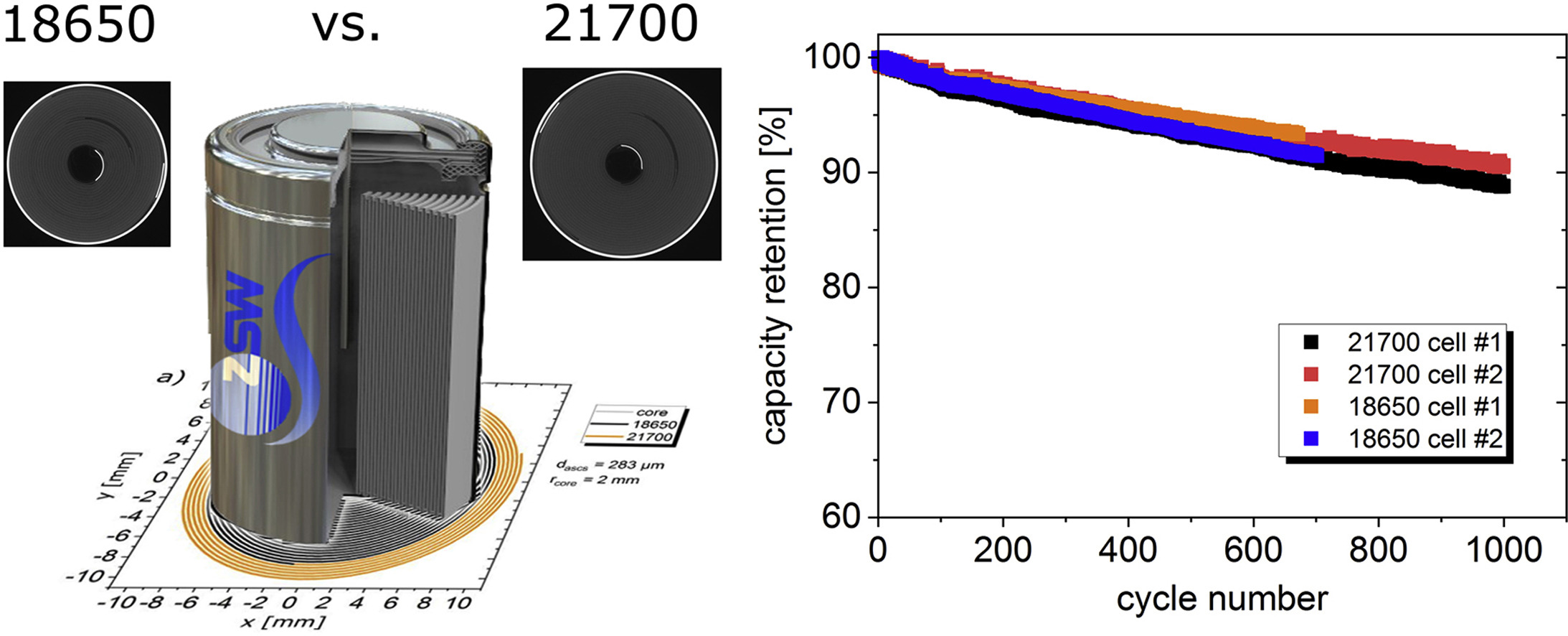Lithium battery enjoys a good reputation in the electric vehicle industry. After years of improvement, it has developed a couple of variations that have its own strength.
18650 lithium battery

18650 lithium battery originally refers to NI-MH and Lithium-ion battery. Now it mostly represents Lithium-ion battery since NI-MH battery has been used in a less frequency.
The 18650 gets its name from its cell size: 18.6 mm in diameter and 65.2 mm in length with weight around 47g.
LiFePO4(LFP) and LiNiaCobMncO2(NCM) are the most popular types. Tesla has performed a larger number of battery tests in order to find out the best battery for its electric vehicle and 18650 is the winner. The 18650 became the base of battery technology development in Tesla‘s production line ever since.
Advantages of the 18650
High Consistency
Before being adopted into the electric vehicle industry, the 18650 has long been used in electronics like laptops, cameras, which makes it the earliest, most stable type of lithium battery. After years of development, the manufacturers use the technical improvement that gains from consumer electronics products on vehicle batteries.
Compared to other inferior forms of battery, the 18650 is highly compatible with various applications that have different voltage, current, and size requirements.
Safer in structure
The 18650 was tested to be nontoxic, inflammable, nonexplosive, and free of contamination, under the certification of RoHS.
Thermal stability under high temperature also outperforms other Li-ion systems. It sees 100% discharge rate at 65℃.
Further more, the battery cell is sealed in a steel cylinder, which allows possibility of smaller size. Thanks to its tiny shape, containing a small amount of energy, the failure of single battery unit posts minimum impact to overall battery performance.
To those outdoor electric bike company like Super73, higher safty level is important for the battery to resist shocking when ride on rough terrain. Tesla has been cautious on battery selection as the fraction between battery cells that generated by different road conditions can result in serious hazards like explosure.
Excellent Energy Density
A single 18650 lithium battery has capacitance of 1200mAh – 3600mAh while others have around 800mAh. This feature enable the battery set to go beyond 5000mAh if they are put together.
At the same weight, the capacity of 18650 battery can be 1.5-2 times of that in NI-MH battery. The self-discharge rate is also low.
According to data provided from Tesla, the specific energy level can go as high as 250Wh/kg to meet the range requirement of Tesla electric vehicles.
High Price-Performance Ratio
The 18650 battery has fairly long expectancy in comparison with regular batteries. The cycle life can be 1000-2000 under proper maintenance. After years of development, the structural design, manufacturing technology and the equipment are competent, allowing lower cost of operation and maintenance.
For its outstangding performance, the 18650 lithium battery can also be found in Super73‘s production lines, the most popular vintage electric bikes brand in the U.S..
However, the 18650 lithium battery is still facing some drawbacks like high self-heating, complicated grouping and slow charging, which are the exact reason that Tesla collaborating with battery giant Panasonic to develop the 21700 lithium battery.
21700 lithium battery

It is said to be the most cost-effective lithium battery that has the highest specific energy on mass production lines.
Dimensions
Diameter 21mm, Length 70mm, Weight 68g.

Figure 1 – The difference of the capacity retention (Left) and the cycle life (Right)between the 18650 and 21700
Advantages of the new model compared to the 18650
The capacity of single cell increased by 50%
The 21700 lithium battery manufactured by Tesla, can reach 3-4.8Ah per cell.
Additional 20% of specific energy of the battery system
According to data from Tesla, the 18650 battery has energy density of around 250Wh/kg while 21700 can go up to 300Wh/kg.
Saving 9% on the cost of battery system
From Tesla’s analysis, the cost of battery set are approximately $170/Wh and $185/Wh for the 21700 and 18650 respectively. Model 3 has successfully cut down its cost by 9% on battery system.
10% lighter in weight
Even though the 21700 battery has larger overall size, it holds higher specific energy in single cell, which means that the number of single cells needed for certain energy is reduced by 33%. It is also easier to manage the battery set for different applications. Moreover, as less cells needed, the absence of the metal and electronics parts will help the battery system lose weight.
It is said that Super73 is likely to replace the 18650 with the 21700 for the mass production in the short future, starting with the best seller model RX.
Similarity
There is a lot in common when it comes to battery production lines and the processes. So it is possible to modify the manufacturing of 18650 battery to 21700’s by changing some of the configurations in the former production system.
Reference:
https://www.sciencedirect.com/science/article/pii/S0378775320309186
Post time: Sep-02-2021
